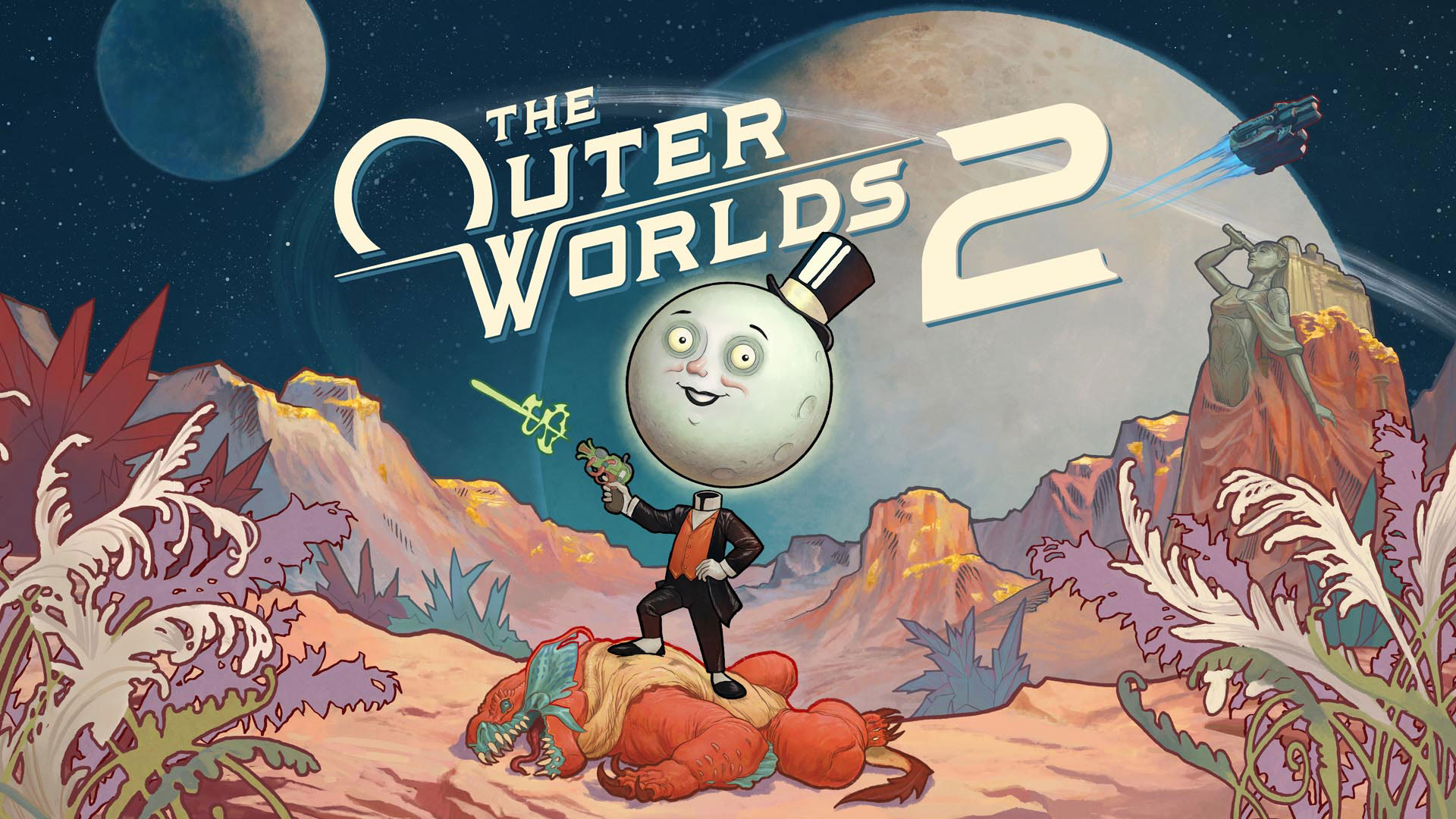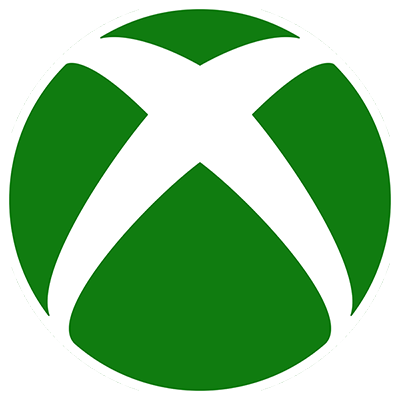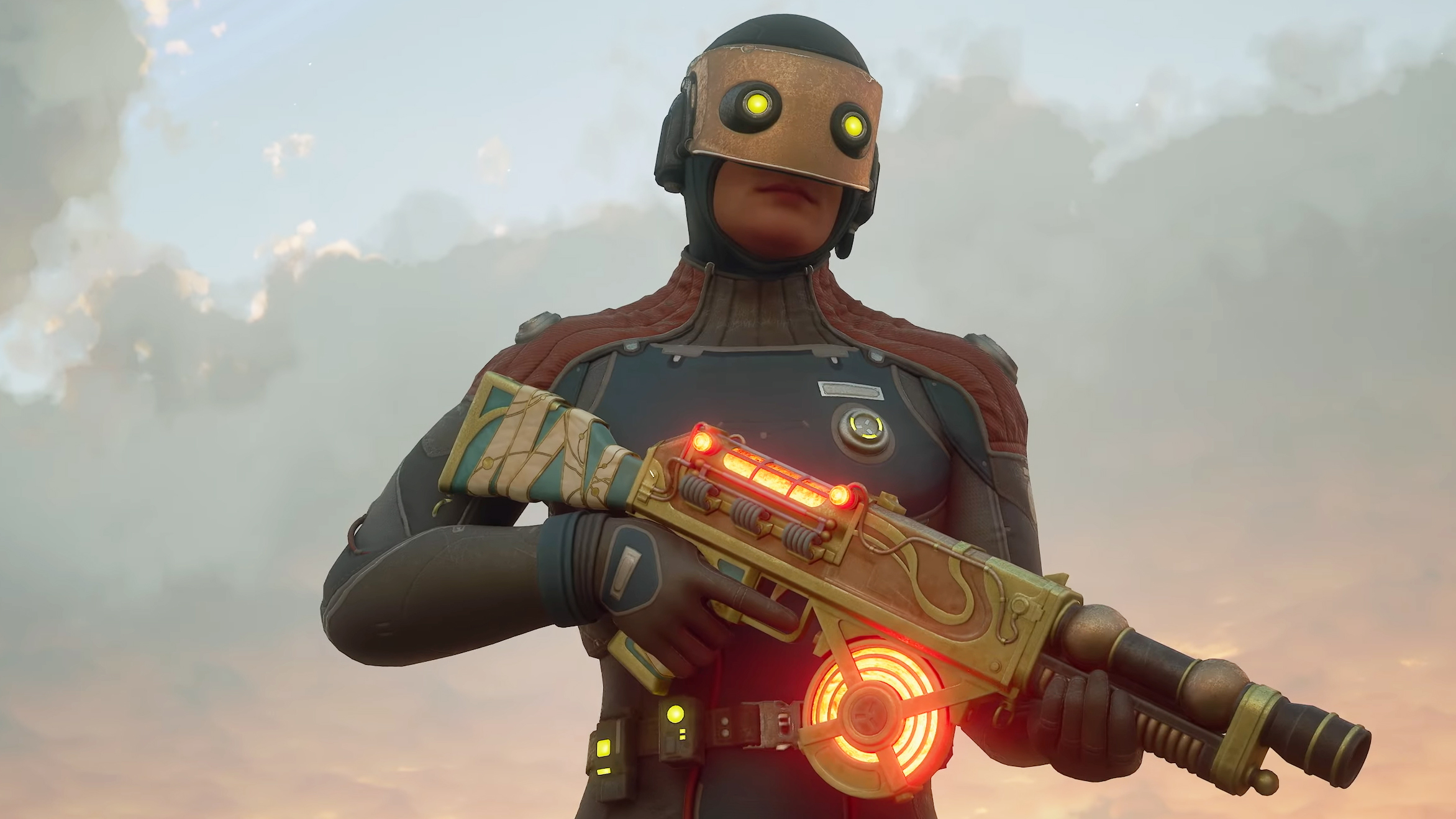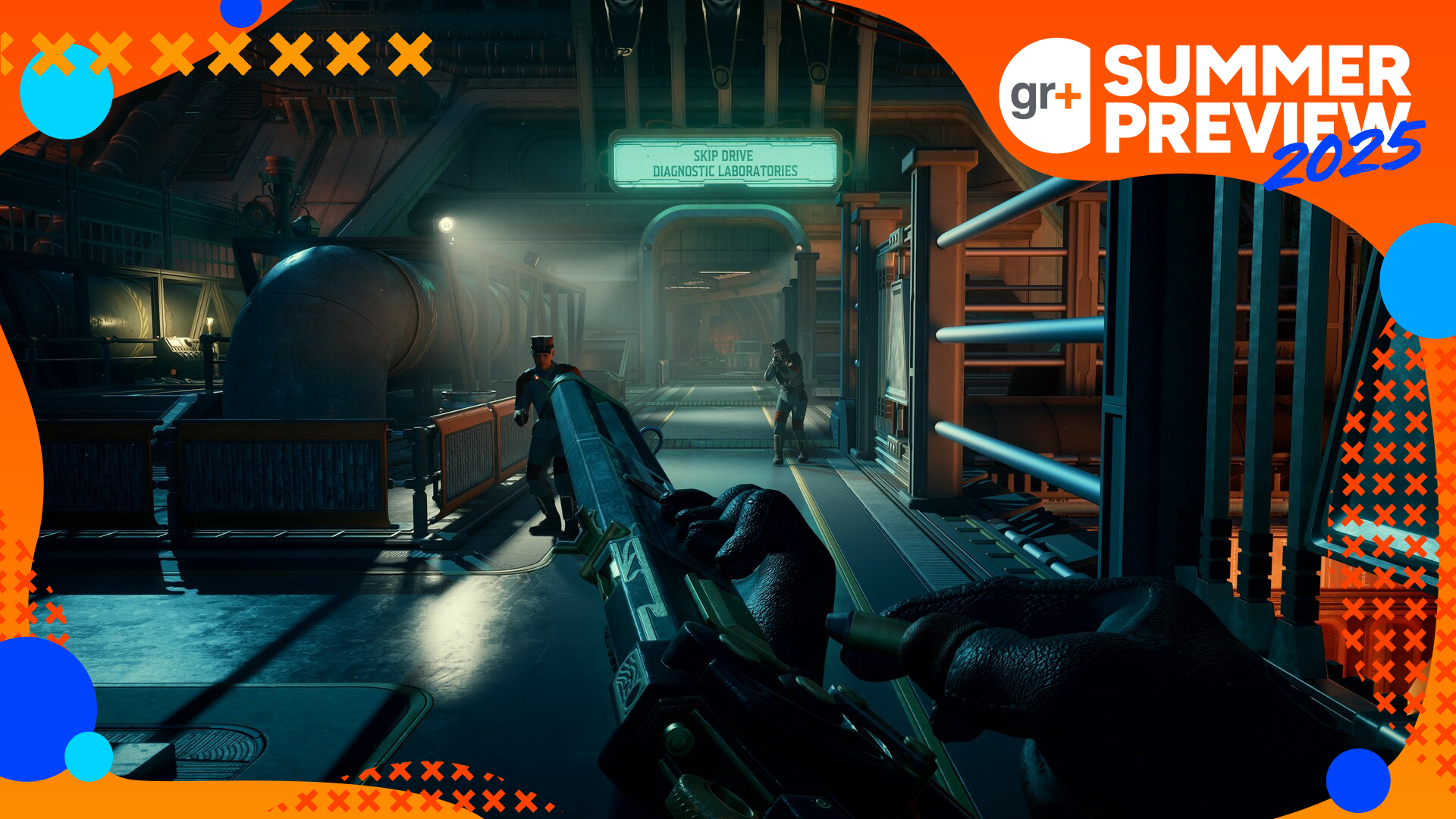The Outer Worlds 2
- Thread starter Hellion
- Start date
-
- Tags
- obsidian outer worlds rpg
Welcome!
By registering with us, you'll be able to discuss, share and private message with other members of our community.
SignUp Now!You are using an out of date browser. It may not display this or other websites correctly.
You should upgrade or use an alternative browser.
You should upgrade or use an alternative browser.
- Joined
- Nov 26, 2012
- Messages
- 18,043
Άρχισαν και τα εκτενέστερα previews.

The Outer Worlds 2: Big Sequel Energy - Xbox Wire
 news.xbox.com
news.xbox.com
Tony Corvus
Ancient Red Dragon
- Joined
- Dec 1, 2012
- Messages
- 11,730
Οπότε αξίζουν τα 79.99 ?
shredder
Death Knight
- Joined
- Sep 17, 2013
- Messages
- 4,856
Φαινεται πως η microsoft δεν εμαθε τιποτα απο την αποτυχια του DOOM THE DARK AGES και το Οuter worlds 2 εχει διια τιμη στα 80 ευρω οπως και το ninja gaiden 4 στα 70!! Αρα και αυτα θα τα παιξω αργοτερα και οχι την ημερα κυκλοφοιρας οπως επαιξα τα ninja gaiden trilogy και outer worlds. Το χειροτερο ομως ειναι πως υπαρχουν καποιοι που υποστηριζουν τετοιες πρακτικες. Τωρα ειδα στο steam στο φορουμ του ninja gaiden 4 εγραψαν δυο οτι πηραν την deluxe εκδοση στα 80. Ευτυχως ειναι μειοψηφιες και οι πειρσσοτεροι οπως εγω ο αρχηγος των foot ninja κανουμε το σωστο και δεν παιζουμε κανενα απο αυτα τα παιχνιδια οταν βγαινει !!! Οπως εχω πει ηδη μοναδικη εξαιρεση θα κανω αν ειναι το επομενο teenage mutant ninja turtles η Sonic.
Tony Corvus
Ancient Red Dragon
- Joined
- Dec 1, 2012
- Messages
- 11,730
Ομολογώ πως δεν το είχα σκεφτεί έτσι. Με έβαλες στη θέση μου με επιχειρήματα και λογική.
- Joined
- Nov 26, 2012
- Messages
- 18,043
Πάντως το γεγονός ότι τα trailer του game περιέχουν τόσο ξεδιάντροπα "CAPITALISM BAD AMIRITE FOLKS" μηνύματα ενώ την ίδια ώρα η MS έσπευσε να του κολλήσει την ταρίφα των 80 ευρώ πάνω, είναι next-level meta shit.
- Joined
- Nov 26, 2012
- Messages
- 18,043

Obsidian's The Outer Worlds 2 looks to fix the problems it always knew the original had
Does The Outer Worlds 2 make good on the shortcomings of the first game?
Obsidian's The Outer Worlds 2 looks to fix the problems it always knew the original had
"Before even The Outer Worlds 1 shipped, we knew we wanted to do a second one."
Brandon Adler, The Outer Worlds 2's director, tells me the team at Obsidian knew exactly what would and wouldn't go down well with the original. "Before the first game even shipped, I did a full breakdown of: here's what I think people are going to like and dislike about the game," he says. "And here's what I think the press is going to like and dislike. And I think we should address these things in the next one."
The studio, then only freshly acquired by Microsoft and still publishing the original game via 2K's Private Division, actually had plans for how a sequel might fix those issues from the off as well. "Before even The Outer Worlds one shipped, we knew we wanted to do a second one. We knew we wanted to plan for that. I knew I wanted to be a part of it," Adler says, speaking during a roundtable chat at an Xbox event during Summer Game Fest.
He's open about what those predicted issues were. "Just the worlds themselves were a little small. And some of that was the size of the map," he explains, with the studio having now made the world - a new mining colony setting called Arcadia - approximately 50 percent larger. Some of it was more intricate: the way the game laid out its sight lines, for instance, or how it now doesn't "hard load" when you go into buildings. Adler offers an example from The Outer Worlds: "In the very first area, there's a volcano, and it looks really cool. And you're like, 'I'm gonna go to that volcano, it looks cool.' And you go to the volcano, there's nothing there."
"We can't do that," he says. "If something looks awesome, the player needs to be rewarded for going there. And now the player feels like the world is bigger because they're actually exploring." Other anticipated complaints were more fundamental - the guns didn't feel great, he and the team rightly identified, and so "gunfeel" has been heavily tinkered with here. (Having played a short mission out here at SGF I can say the guns - at least those available in this limited case - do feel at the very least perfectly fine.)
Adler's also open about the studio's relationship with Microsoft - who he calls a "great partner" - and its role in giving Obsidian more freedom with the sequel. The first reveal trailer's joke, that The Outer Worlds 2 took about twice as long to make, is actually not far off the mark, according to him. Likewise the team had "more resources" this time, both in a blunt financial sense and in other ways. He cites the ability to go and speak to Microsoft's user research team for easy playtesting as one example. "We were not hurting for resources and time," as Adler put it when I asked if he could be a little more specific on the difference. "Any time we asked Microsoft for more, or we said we really want to do this thing, they've been great partners in being like, 'Yeah, let's do this, let's figure out how to go do this.'"



"We were not hurting for resources and time," says game director Brandon Adler about The Outer Worlds 2. | Image credit: Obsidian
Beyond the basics of scale, The Outer Worlds 2 also seems to just be generally more intricate, more thoughtfully assembled and more generally involved than its predecessor. There are more Perks - an idea Adler says he essentially took straight from Obsidian's Fallout: New Vegas because the team liked it so much - with over 90 now available. The stealth is more elaborate and viable as a real option, with newly added distraction devices for lobbing at gormless foes, or disintegration gadgets that make enemy bodies disappear. There are more, and more silly, flaws this time, which are offered to you after certain playstyle thresholds are triggered. I was desperate to try out the Bad Knees one featured in the showcase, which lets you move much faster, a boon for stealth, but also means your knees loudly pop and crack whenever you stand up, alerting everyone nearby, though sadly it wasn't triggered in my quick runthrough.
The other big push Obsidian has made, which Adler is also keen to emphasise during our conversation, is the attempt to make The Outer Worlds 2 more reactive to your decisions. During my playthrough - a mission where you and a companion shoot, blag, or sneak your way through a dodgy research facility - the main example was a conversation with a side character hanging out in some room slightly off the main path. With the right dialogue choices you could take on a side mission for her, digging into some workplace politics and eventually leading to a final showdown between her and her shady colleague. The sense I got from the conversations in-game, though I couldn't confirm it at the time, was that she may or may not actually end up confronting her rival in person at all. It certainly seemed to be true that she died in doing so because I completely ignored her requests to stay hidden and instead just lobbed a grenade at him the first chance I had (whoops).


"We want to respect people's time," says Obsidian. | Image credit: Obsidian
Adler is keen to explain there are also much bigger consequences, of the kind Obsidian fans, raised on the likes of Fallout: New Vegas, might be familiar with. "Typically, with most Obsidian games, there are lots of story points where things change, but we tried to go a lot further on that," he says. "Even things like: how do you treat your companions? Do you treat them poorly? Well, there are points in the story where that's going to matter, and they will push back at you, or they won't listen, or they'll back you because you were there for them and you kind of helped them out when something went wrong, or something like that."
Likewise, there are moments of major consequence for the wider world. Some decisions will lock out factions that you could otherwise work with (and bringing a companion from one faction into a rival's HQ will probably lead to a fight, he adds). "Even in the very first region, there's a decision towards the end that really kind of affects large portions of the map itself."
My hands on itself was maybe a little too brief, especially with only time to play with one playstyle, to give a really clear idea of just how much these things have improved. The slightly grating corporate-motivational-poster humour is still there, for better or worse according to your tastes. But also the physical humour, the slightly more subtle or silly things like those popping knees, feel like they've been dialled up a little more too.
The mission I played felt curiously like one of Starfield's better quests: a branching path of larger rooms and smaller side vents, environmental hazards and locked doors. I mean that in a good way - some of Starfield's better quests are genuinely good quests - and the hazards are another sign of all the little details, along with the many layers of submenues, seem to be adding up to genuine depth. A defeated mech spilled a load of toxic grease that almost did me in when I went to loot it; one of the rifts I needed to close also just killed me on the spot when I rather naively walked straight into it.
That sense of ever so slight prickliness - in a good way; dare I say it a kind of cheeky way - is also carried over into other decisions too. Admirably, Adler says he wasn't interested in watering down the RPG experience to accommodate an influx of newcomers via Game Pass, for instance. "It's probably not a popular thing for me to say, but like, that's just not as important," he says, of wanting to keep even more players on board. "That doesn't come into the calculus of the cool fun game I want to make. Yeah, we want to make a game that people want to continue playing for a long time, obviously, but I'll tell you: not every game is for every single person, and sometimes you just have to pick a lane and choose that."
Not allowing players to "respec" is one example of that, and perhaps Adler and Obsidian's approach in microcosm, which at least from this early impression and conversation seems to be one of genuine vision, and determination to have a proper crack at realising a fuller idea of the game with The Outer Worlds 2.
"We want to respect people's time," he says, "and for me, in a role-playing game, that is saying: your choices matter, so take that seriously, and we're going to respect that by making sure that we give you cool reactivity for those choices that you're making." If that's not for you, it's understandable, he says, "and we hope that we can convince you that it is. But I'm also not going to make a game for literally everybody, because then I feel it waters down the experience."

The Outer Worlds 2 game director says its writing has a 'less silly, darker tone' than the first game
People aren't always bad in silly ways. Sometimes they're just bad.
The Outer Worlds 2 game director says its writing has a 'less silly, darker tone' than the first game
People aren't always bad in silly ways. Sometimes they're just bad.
In our Outer Worlds review back in 2019, we called Obsidian's sci-fi satire "a quirky romp across a solar system ruled by brutal corporations," but the zany ribbing about the excesses of corporate misconduct didn't land for everyone living in the world where the delivery drivers of major companies are pressured to pee in bottles to be able to make their quotas. In The Outer Worlds 2, Obsidian says that—while there'll still be plenty of humor—the writing will have a darker weight behind it.
In an interview with PC Gamer during SGF 2025, The Outer Worlds 2 game director Brandon Adler said that the first game's writing "could sometimes be one note," and that he wants the sequel to be able to hit more beats than just goofery.
"I want to give players something new from that, so they don't feel like 'Oh, we're just running through the same types of jokes, the same type of content, the same type of ideas and themes over and over again,'" Adler said.
In particular, Adler said The Outer Worlds 2's factions will be responsible for that sharper edge to the game's tone. Consider the authoritarian Protectorate faction, which Obsidian said in the Xbox Games Showcase was based on the question: "How much freedom will people give up for security and luxury?" Let's just say it's a topical idea. And then there's Auntie's Choice, a conglomerate of the first game's corporations that has "invaded Arcadia to liberate their resources for all of humanity—at a profit of course."
"They felt a little bumbling in the first game," Adler said. "In this game, I hope that they feel a lot more cutthroat and a little bit scarier to interact with."
That shift in attitude is, in part, a product of change in leadership. Tim Cain, one of the creators of the original Fallout, worked as one of two creative directors on the first Outer Worlds alongside fellow Fallout designer Leonard Boyarsky. After the first game's release, Cain went into pseudo-retirement, though he still contributed to The Outer Worlds 2 as a creative consultant, with Boyarsky working as the sequel's sole creative director.
"You'll notice that there's a little bit of a less silly, darker tone that comes out. That's mainly because of Leonard," Adler said. "That's his kind of vibe, and so he has more of a push on that stuff. And so I think even the overall story feels a little bit like a darker take on what's going on there."
Don't worry, though. That doesn't mean that humor will be hard to find in Outer Worlds 2.
"We still wanted to make sure that we had a lot of the same feeling as the first and so when players are interacting with the different factions, they also get to see that absurd humor that comes through," Adler said. "Hopefully it's a little bit less silly and a lot more absurd."
The Outer Worlds 2 launches on October 29, 2025.
Tony Corvus
Ancient Red Dragon
- Joined
- Dec 1, 2012
- Messages
- 11,730
Πχιο πολύ ψήθηκα για το Κλοκγορκ της Inxile.
- Joined
- Nov 26, 2012
- Messages
- 18,043
Παχιά λόγια.

 www.gamesradar.com
www.gamesradar.com

After playing The Outer Worlds 2, I'm convinced that it has the potential to be Obsidian's greatest game – and the best FPS of 2025
Summer Preview | The Outer Worlds was a fun sci-fi adventure, but its sequel is shaping up to be something truly special
After playing The Outer Worlds 2, I'm convinced that it has the potential to be Obsidian's greatest game – and the best FPS of 2025
Summer Preview | The Outer Worlds was a fun sci-fi adventure, but its sequel is shaping up to be something truly special
I can't believe I'm saying this, but there's a good chance that The Outer Worlds 2 is going to be the best shooter of 2025.. And in a year where Xbox has already delivered Doom: The Dark Ages, and has Call of Duty: Black Ops 7 on the near horizon, I really didn't expect to be walking away from my time exploring the lawless frontier of Arcadia obsessing over the feel of a shotgun.
That surprise you're picking up on isn't because I think developer Obsidian Entertainment isn't capable of greatness – the studio is, after all, undoubtedly responsible for some of the best RPGs of the last 20 years. Role-playing games, not shooters – there are sharp degrees of expertise required to succeed in either landscape. But the studio has clearly set itself exceptionally lofty targets here, with big ambitions fuelling what could be its most definitive title to date.
A True Evolution
The Outer Worlds 2 is a substantial evolution over its predecessor, designed to be more reactive and intricate in all that it does. Obsidian has drawn from the legacy of Fallout: New Vegas to help inform The Outer Worlds 2's complexity. There are more varied flaws and traits, and over 90 perks – even from a brief time poking through the menus, it's clear that there's a dizzying variance to character creation and expansion. Stealth has been carefully overhauled, and there's a dynamism to speech that demonstrates growth over similar systems seen in Obsidian's Avowed and Bethesda's Starfield.
Which is all to say that The Outer Worlds 2 is really shaping up to be a pretty exceptional RPG…but let's get back to that shotgun. The one adorned in shards of ice. The one which blasts enemies back with this shatteringly concussive force. I haven't stopped thinking about the reload animation, as individual shells are slotted into place before the barrel is cocked back into position with a satisfying snap. It speaks volumes that, while exploring a sprawling environment full of branching paths, locked doors, and ventilation systems, I feel so inclined to charge into enemy encounters with this thing in my hands. This isn't how I'd traditionally play a video game like The Outer Worlds 2, but I can't help myself.
For a studio like Obsidian, with decades of experience and expertise in the RPG genre, I was keen to understand how it is delivering gunplay that could legitimately outshine dedicated shooters. Brandon Adler, game director of The Outer Worlds 2, was only too happy to answer: "Even before The Outer Worlds shipped, that was one of the things we knew we wanted to improve when it became time to target a sequel."
Adler tells me that this process included the design team completing a "full breakdown of Destiny" for inspiration, and a masterclass with another key team from the Xbox Game Studios network. "Another big aspect was talking to the Halo folks. We asked them: 'What do you guys do? How can we improve this, and what are we doing wrong?' They gave us this huge list of stuff and said that we should target these types of things, add this to our weapons configurations. So we did all of that."
He also points to the decision to bring in dedicated combat and weapons designers into development early, and the impact increased resources can have on a production – the original game was published by Private Division, rather than Xbox Game Studios. You can feel this flood of expertise in the way the guns handle; the personality inherent in every reload, the unique recoil patterns attached to every weapon class, and the sharp snap into ADS.
Which is all to say that The Outer Worlds 2 is shaping up to be a compelling prospect, regardless of whether you're coming to it for the most in-depth RPGs of the year or have typically leaned towards more traditional shooters in the past. There was always going to be this need for The Outer Worlds 2 to prove itself on a larger stage than the 2019 original.
It's the first title out of Xbox Game Studios to be priced at $80, and another would-be Xbox exclusive that's set to land on PS5 from day one. It's difficult to know whether Obsidian is truly ready for the scrutiny that's about to follow. But what I do know is that after three runs through a small slice of The Outer Worlds 2, I'm absolutely desperate to carve my own path through Arcadia.
The Nameless One
Mind-flayer
- Joined
- Jun 16, 2015
- Messages
- 2,311
Δεν μπορεί να γίνει το καλύτερο παιχνίδι της obsidian γιατί σε αντίθεση με τα κορυφαία της δεν είναι TB, άρα έχει χάσει από τα αποδυτήρια!Παχιά λόγια.

After playing The Outer Worlds 2, I'm convinced that it has the potential to be Obsidian's greatest game – and the best FPS of 2025
Summer Preview | The Outer Worlds was a fun sci-fi adventure, but its sequel is shaping up to be something truly specialwww.gamesradar.com
Έτσι όπως το πάω μέχρι και ο shredder θα με αρχίσει στο δούλεμα 
razvedchiki
Death Knight
- Joined
- Dec 1, 2012
- Messages
- 2,781
δηλ θα εχει τα συστηματα του new vegas με τους νεωτερισμους στο fps κομματι που φερνει η καινουργια μηχανη γραφικων?
- Joined
- Nov 26, 2012
- Messages
- 16,183
ένα λεπτό, FPS?
Tony Corvus
Ancient Red Dragon
- Joined
- Dec 1, 2012
- Messages
- 11,730
Θα περιμένω review από τον Σρεδερ...
shredder
Death Knight
- Joined
- Sep 17, 2013
- Messages
- 4,856
Το καλυτερο FPS ειναι το DOOM THE DARK AGES! Μαλλον η Obsidian μας δουλευει αν πιστευουν πως το outer wolrds 2 θα ειναι το καλυτρο fps!!!Δεν μπορεί να γίνει το καλύτερο παιχνίδι της obsidian γιατί σε αντίθεση με τα κορυφαία της δεν είναι TB, άρα έχει χάσει από τα αποδυτήρια!
Έτσι όπως το πάω μέχρι και ο shredder θα με αρχίσει στο δούλεμα
Online statistics
- Members online
- 10
- Guests online
- 250
- Total visitors
- 260
- Robots
- 372
Totals may include hidden visitors.
